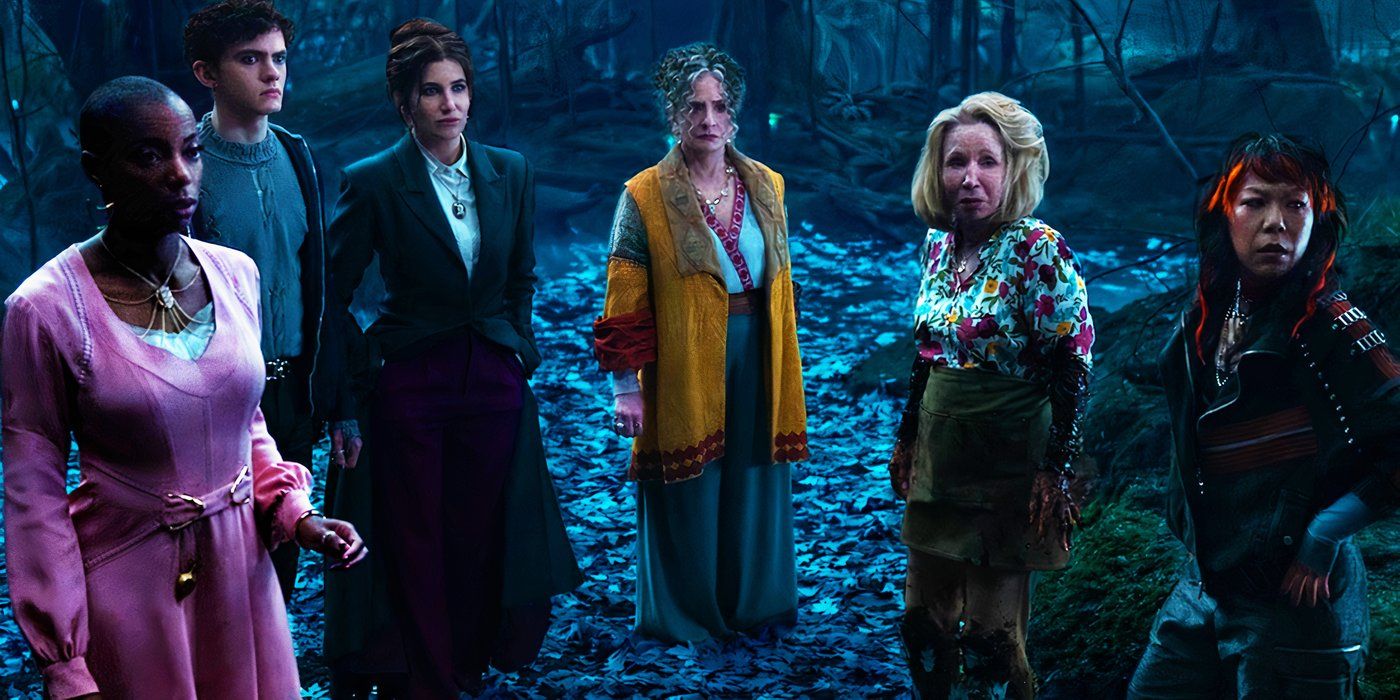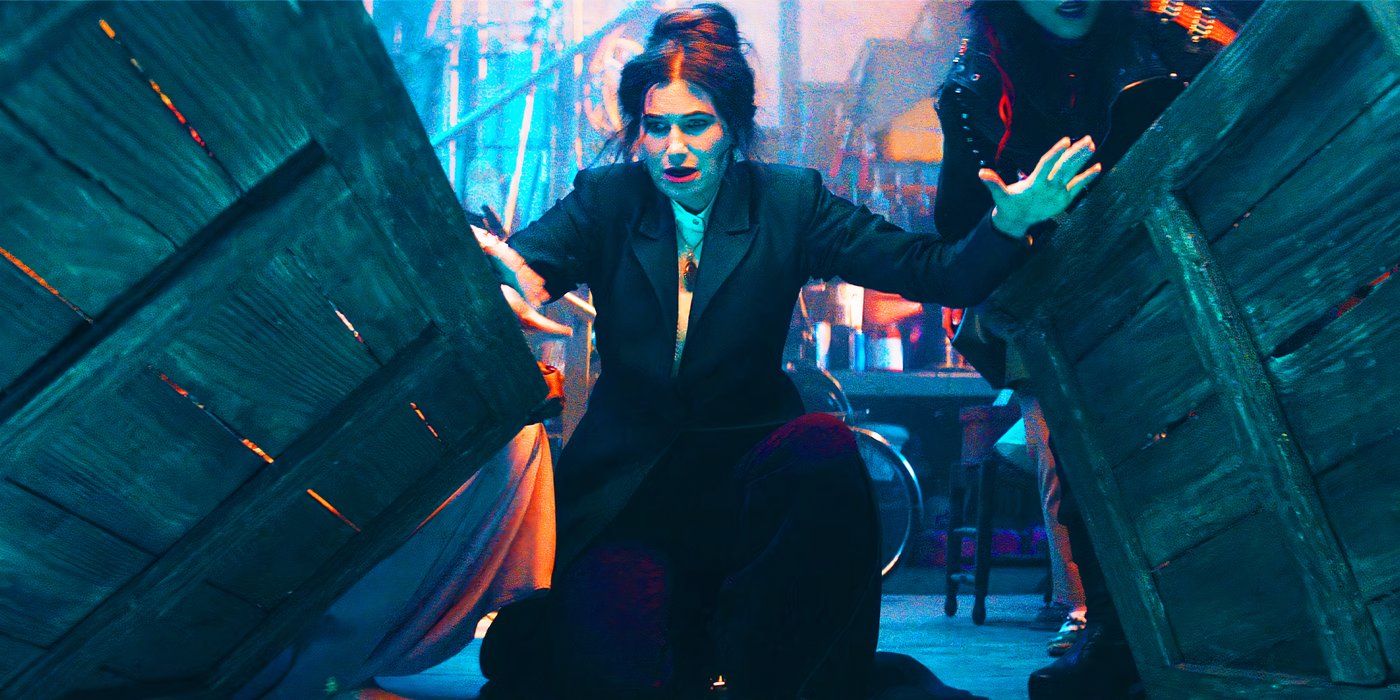
The origin of Marvel Studios’ Agatha All Along is just as captivating as its on-screen content, and the behind-the-scenes revelations add a whole new layer of appreciation for the Disney+ series. While the show serves as a spin-off to WandaVision, its path to creation is far more unique than a simple continuation of an existing character’s arc. In Assembled: The Making of Agatha All Along, Marvel’s documentary about the production, Jac Schaeffer – WandaVision’s creator and Agatha All Along’s showrunner – offered an intriguing explanation of how the series came to life.
Agatha All Along gave the iconic eponymous villain her own installment in the MCU timeline. With Katherine Hahn continuing her celebrated performance in WandaVision, the series was a glorious foray into camp horror. This was a diversion from Marvel’s typical superhero fare, demonstrating that the franchise could explore new and wildly different directions. Indeed, the unexpected development of Agatha All Along helps explain why it has resonated with audiences and succeeded as more than just a spin-off.
The Story of How Agatha All Along Came To Be Is Very Different From What I Expected
Agatha All Along Wasn’t The Typical Marvel Sequel










According to Jac Schaeffer, Agatha All Along wasn’t initially planned as a dedicated series. In Assembled: The Making of Agatha All Along, Schaeffer shared that the idea for the show emerged from her recurring habit of including Agatha in various unrelated Marvel projects. “When I came back to Marvel and started developing some ideas for different shows,” she explained, “every show concept I had, had an Agatha piece to it. No matter what character or what world, there was always, ‘And then, in episode 104, Agatha comes in.’”
Schaeffer’s consistent inclusion of Agatha in her pitches caught the attention of Kevin Feige. After reviewing several of Schaeffer’s concepts, Feige finally asked, “Should we be doing a show based on Agatha?” This suggestion quickly evolved into a realization: “Why aren’t we doing a show based on Agatha?” From that point, the project gained momentum, and Agatha All Along transitioned from a recurring subplot into a standalone series exploring the fascinating, mischievous witch.
The organic nature of this origin story is surprising, as it diverges from the typical development process for spin-offs. Instead of being mandated as a continuation of a popular character, Agatha All Along was born out of Schaeffer’s creative instincts. The result is a series that feels more like a labor of love than a corporate obligation.
Agatha All Along’s Origin Story Explains Why It Was Such a Success
Agatha All Along Was More Of A Passion Project

The story behind Agatha All Along’s creation reveals why the show has been such a hit: it wasn’t just a spin-off churned out to capitalize on WandaVision’s popularity. Instead, it emerged from a deep well of ideas and creative passion, rooted in Jac Schaeffer’s consistent fascination with the character of Agatha Harkness. Schaeffer’s repeated inclusion of Agatha in her pitches highlights how much potential she saw in the character, played with scene-stealing charisma by Kathryn Hahn.
This enthusiasm ensured that Agatha All Along wouldn’t feel like a forced continuation but rather an exploration of untapped storytelling possibilities. By the time the show came to fruition, it had a strong creative foundation, driven by Schaeffer’s genuine excitement for the character. The success of Agatha All Along also lies in its freedom to chart new territory.
Because it wasn’t conceived as an obligatory sequel to WandaVision, the series could carve out its own identity while still building on the legacy of its predecessor. This creative independence allowed Schaeffer and her team to explore Agatha’s backstory. This meant they could delve into the magical side of the Marvel Cinematic Universe, and create a fresh narrative that stood on its own.
Agatha All Along’s Creation Story Makes Me Even More Glad It Happened
Agatha All Along Nearly Wasn’t Made

Hearing how close Agatha All Along came to not existing makes its success all the more satisfying. While Agatha Harkness became an instant fan favorite in WandaVision, the idea of giving her a standalone series wasn’t on the table from the start. If Jac Schaeffer hadn’t repeatedly woven Agatha into her Marvel pitches, the character might have remained a one-off villain, her potential left unexplored. It’s particularly gratifying to know that Agatha All Along didn’t happen by accident but as the result of Schaeffer’s persistence and Kevin Feige’s willingness to take a chance.
Schaeffer’s anecdote about how Feige went from asking if Agatha should have her own show to enthusiastically greenlighting the idea underscores the collaborative spirit behind the Marvel Cinematic Universe. This story also serves as a reminder that some of the MCU’s best ideas come from creators following their instincts and pushing for what they believe in. Knowing how close Agatha All Along came to being overlooked makes the series feel even more like a triumph of creative vision – and an essential addition to Marvel’s ever-expanding universe.
